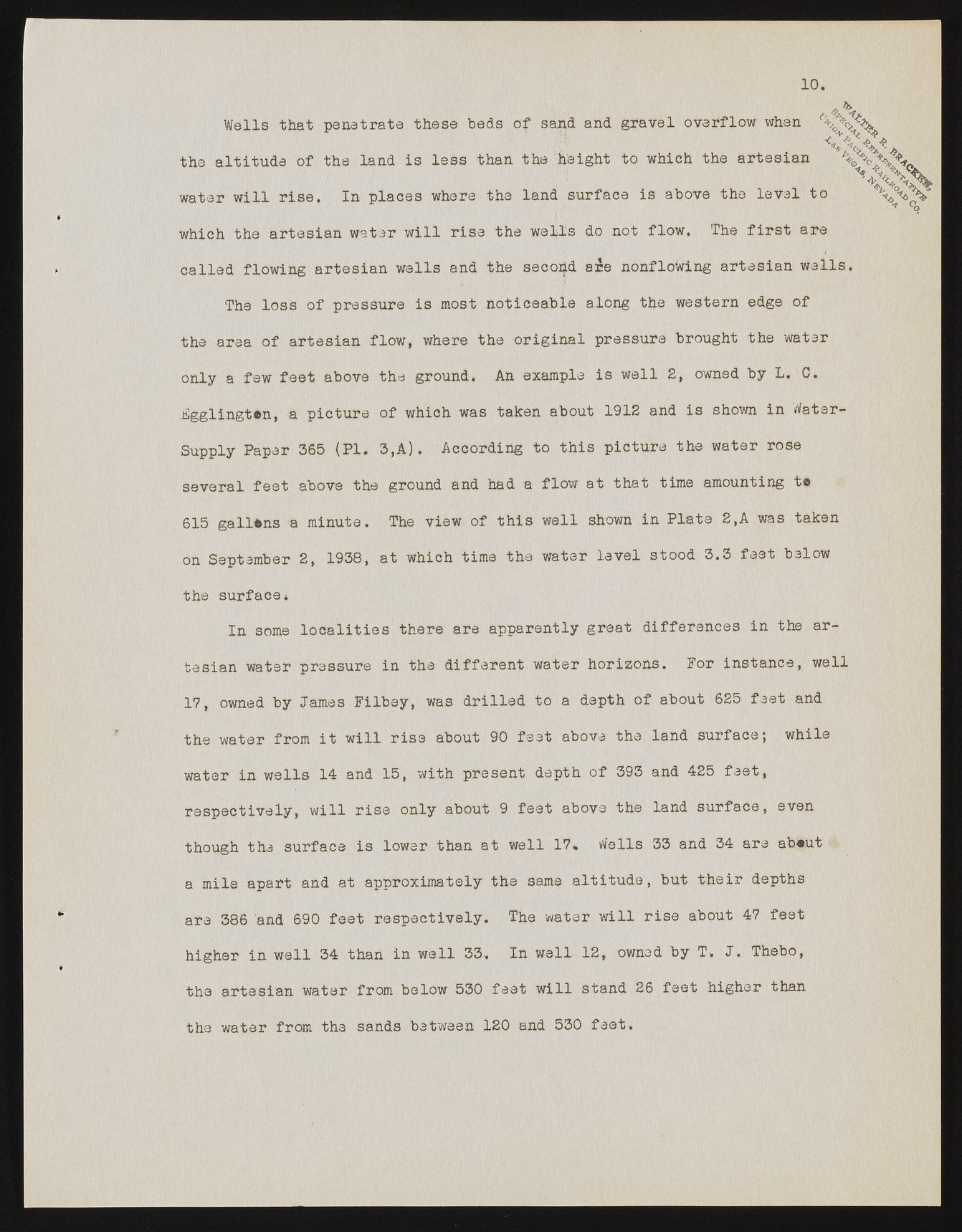Copyright & Fair-use Agreement
UNLV Special Collections provides copies of materials to facilitate private study, scholarship, or research. Material not in the public domain may be used according to fair use of copyrighted materials as defined by copyright law. Please cite us.
Please note that UNLV may not own the copyright to these materials and cannot provide permission to publish or distribute materials when UNLV is not the copyright holder. The user is solely responsible for determining the copyright status of materials and obtaining permission to use material from the copyright holder and for determining whether any permissions relating to any other rights are necessary for the intended use, and for obtaining all required permissions beyond that allowed by fair use.
Read more about our reproduction and use policy.
I agree.Information
Digital ID
Permalink
Details
Member of
More Info
Rights
Digital Provenance
Publisher
Transcription
Wells that penetrate these beds of sand and gravel overflow when ?t the altitude of the land is less than the height to which the artesian % water will rise. In places where the land surface is above the level to which the artesian water will rise the wells do not flow. The first are called flowing artesian wells and the secohd are nonflotolng artesian wells. The loss of pressure is most noticeable along the western edge of the area of artesian flow, where the original pressure brought the water only a few feet above the ground. An example is well 2, owned by L. C. Fgglingtin, a picture of which was taken about 1912 and is shown in Water- Supply Paper 365 (PI. 3,A). According to this picture the water rose several feet above the ground and had a flow at that time amounting t« 615 gallons a minute. The view of this well shown in Plate 2,A was taken on September 2, 1938, at which time the water level stood 3.3 feet below the surface* In some localities there are apparently great differences in the artesian water pressure in the different water horizons. For instance, well 17, owned by James Filbey, was drilled to a depth of about 625 feet and the water from it will rise about 90 feet above the land surface; while water in wells 14 and 15, with present depth of 393 and 425 feet, respectively, will rise only about 9 feet above the land surface, even though the surface is lower than at well 17, Wells 33 and 34 are ab*ut a mile apart and at approximately the same altitude, but their depths are 386 and 690 feet respectively. The water will rise about 47 feet higher in well 34 than in well 33, In well 12, owned by T. J. Thebo, the artesian water from below 530 feet will stand 26 feet higher than the water from the sands between 120 and 530 feet.

